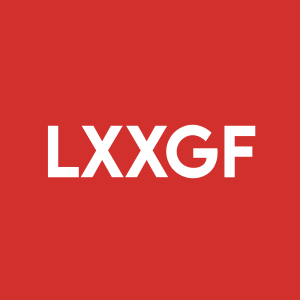LexaGene Completes First Stage of U.S. ARMY DEVCOM Agreement
Rhea-AI Summary
LexaGene Holdings, Inc. (OTCQB: LXXGF) has successfully detected anthrax spores using its MiQLab™ System, advancing its Cooperative Research and Development Agreement with the U.S. Army’s DEVCOM. This testing phase aims to evaluate sensitivity and quantitative capabilities for biothreat detection, with studies commencing around November 15, 2021. The MiQLab is designed for automated multiplex PCR testing, facilitating rapid detection of pathogens. Company representatives emphasize the robustness of their sample preparation in detecting dormant spores, crucial for biothreat response.
Positive
- Successful detection of anthrax spores on the MiQLab™ System.
- Advancing to the second stage of the Army CRADA for further testing.
- Robust sample preparation enhances MiQLab's detection capabilities.
Negative
- None.
Insights
Analyzing...
BEVERLY, Mass., Oct. 29, 2021 (GLOBE NEWSWIRE) -- LexaGene Holdings, Inc., (OTCQB: LXXGF; TSX-V: LXG) (“LexaGene” or the “Company”), a molecular diagnostics company that has commercialized an instrument for automated multiplex PCR testing, today announced it has successfully detected anthrax spores on the MiQLab™ System.
Previously, LexaGene announced it had entered into a Cooperative Research and Development Agreement (CRADA) with U.S. Army’s Combat Capabilities Development Command (DEVCOM).
Dr. Jack Regan, CEO and Founder of LexaGene stated, “We are now progressing to the second stage of the Army CRADA, during which the MiQLab’s sensitivity and quantitative ability for biothreat detection will be tested at the Army’s DEVCOM Chemical Biological Center at Aberdeen Proving Grounds, Maryland. Due to the Army’s facility and personnel availability, these studies are planned to begin during the week of November 15th, and we will ship multiple systems to the Army for this start date.”
Spores are particularly concerning for biothreat detection, as stated by Basta and Annamaraju, “B. anthracis is a gram-positive spore-forming bacteria that are commonly found in the soil of endemic areas. It is one of the most common agents used in biological warfare. Many factors make B. anthracis a good bioweapon. Its endospores can be placed into food, water, powder, and sprays, spreading the anthrax infection without anyone's knowledge, as endospores are microscopic, cannot be tasted or felt. In 2001, anthrax spores were used as a bioweapon in the U.S. They were distributed into letters delivered by the United States Postal system spreading anthrax infection among 22 mail handlers and customers. Anthrax bioterrorism attacks can take several other forms. B. anthracis endospores can be released into food and water, sprayed from the air or high buildings, or even carried on clothes or shoes. B. anthracis endospores can cast a high risk of misuse and pose severe threats to public safety and health.”1
Dr. Manoj Nair, Director Applications & Assay Development at LexaGene commented, “For the first stage of the Army CRADA, DEVCOM sent LexaGene inactivated anthrax spores, so we could internally determine whether LexaGene’s MiQLab can successfully detect them. In contrast to actively growing cells, a spore is the most dormant stage of a bacterium. They are formed in response to harsh conditions so they can survive until conditions improve. Spores have very thick walls that are hard to break, making detecting the genetic material inside the spore difficult. Only very high-quality sample preparation procedures can successfully break open spore walls and allow for the genetic material inside to be detected by PCR especially when the spores are present at low concentrations. I’m pleased to report the MiQLab’s sample preparation is robust enough to successfully detect the anthrax spores from the delivered samples.”
To learn more about LexaGene and the MiQLab System or subscribe to company updates, visit www.lexagene.com, or follow us on Twitter or LinkedIn.
On Behalf of the Board of Directors
Dr. Jack Regan
Chief Executive Officer & Chairman
About LexaGene Holdings Inc.
LexaGene is a molecular diagnostics company that develops molecular diagnostic systems for pathogen detection and genetic testing for other molecular markers for on-site rapid testing in veterinary diagnostics, food safety and for use in open-access markets such as clinical research, agricultural testing, and biodefense. End-users simply need to collect a sample, load it onto the instrument with a sample preparation cartridge, enter sample ID and press ‘go’. The MiQLab™ system delivers excellent sensitivity, specificity, and breadth of detection and can return results in approximately two hours. The unique open-access feature is designed for custom testing so that end-users can load their own real-time PCR assays onto the instrument to target any genetic target of interest.
The TSX Venture Exchange Inc. has in no way passed upon the merits of the proposed transaction and has neither approved nor disapproved the contents of this press release. Neither TSX Venture Exchange nor its Regulation Services Provider (as that term is defined in the policies of the TSX Venture Exchange) accepts responsibility for the adequacy or accuracy of this release.
This news release contains forward-looking information, which involves known and unknown risks, uncertainties and other factors that may cause actual events to differ materially from current expectation. Important factors -- including the availability of funds, the results of financing efforts, the success of technology development efforts, the cost to procure critical parts, performance of the instrument, market acceptance of the technology, regulatory acceptance, and licensing issues -- that could cause actual results to differ materially from the Company's expectations as disclosed in the Company's documents filed from time to time on SEDAR (see www.sedar.com). Readers are cautioned not to place undue reliance on these forward-looking statements, which speak only as of the date of this press release. The company disclaims any intention or obligation, except to the extent required by law, to update or revise any forward-looking statements, whether as a result of new information, future events or otherwise.
- https://www.ncbi.nlm.nih.gov/books/NBK556071/








